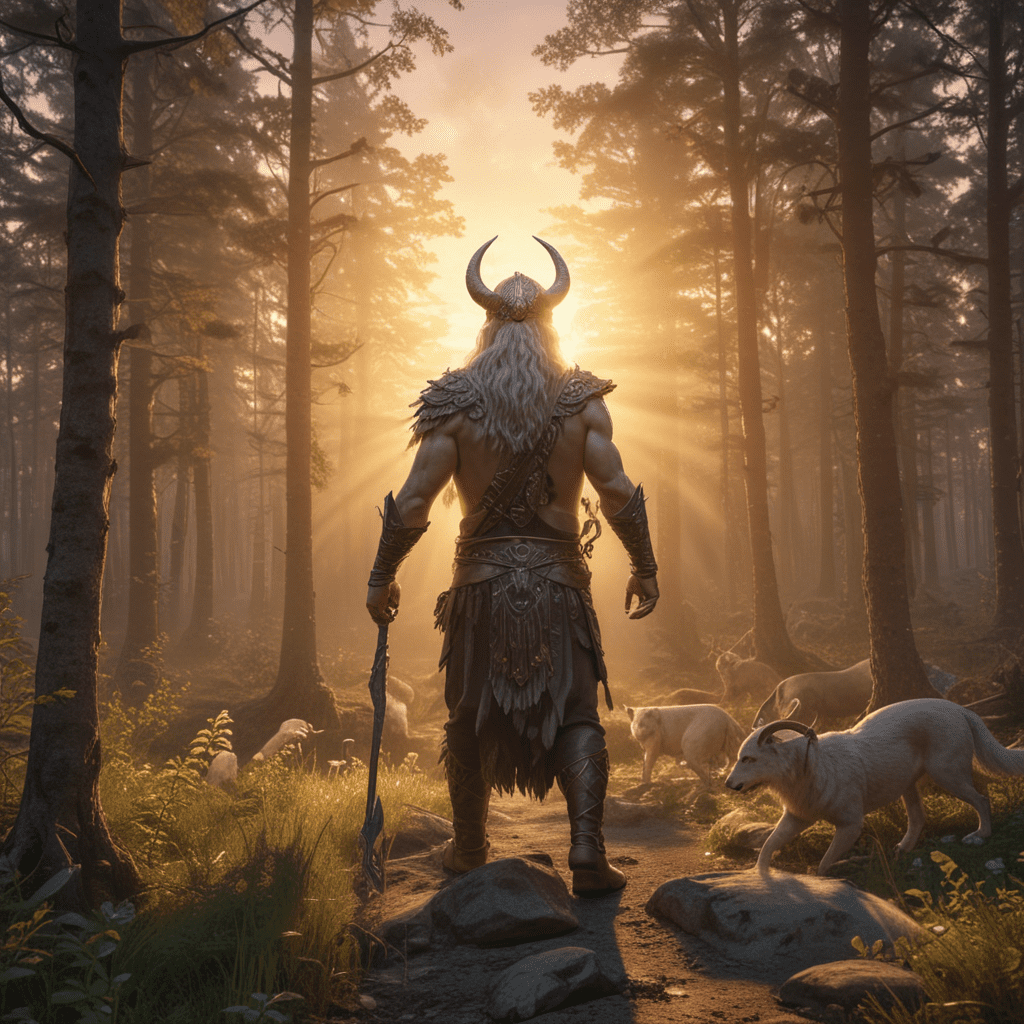1. Introduction to Finnish Mythology
Finnish mythology, steeped in ancient beliefs, rituals, and folklore, offers a captivating glimpse into the rich tapestry of Finnish culture. This mythology is deeply rooted in nature, with its gods, spirits, and heroes embodying the forces of the natural world. Among the many captivating elements of Finnish mythology is the profound significance of the dawn, a symbol of creation, renewal, and the triumph of light over darkness.
2. The Dawn as a Symbol of Creation and Renewal
The dawn in Finnish mythology holds immense symbolic power. It represents the birth of a new day, a fresh start, and the promise of new possibilities. As the darkness of night retreats, the dawn brings forth light and life, heralding a time of growth, fertility, and abundance. The arrival of dawn signifies the renewal of the natural world, the awakening of the earth, and the rejuvenation of all living beings.
3. Bringer of Light
In Finnish mythology, the dawn is often personified as a deity or spirit responsible for illuminating the world and dispelling the shadows of night. This deity, known as Päivätär, is depicted as a radiant goddess who ascends to the heavens at dawn, bringing forth light and warmth to the land. Päivätär's arrival marks the beginning of a new cycle, a time when evil spirits retreat, and good prevails.
4. The Dawn Maiden Tellervo: Symbol of Fertility
Another significant figure associated with the dawn in Finnish mythology is the dawn maiden, Tellervo. Tellervo embodies the fertility and abundance of the earth. Her tears are said to bring forth crops and vegetation, symbolizing the regenerative power of the dawn. Tellervo's presence in mythology highlights the close connection between the dawn and agricultural practices, as well as the dependence of human society on the bounty of nature.
5. The Dawn Star: A Guiding Beacon
In Finnish mythology, the dawn star, known as Kointähti, serves as a celestial guide. Appearing in the eastern sky before the sun, Kointähti symbolizes hope, direction, and the promise of a new beginning. Its presence offers reassurance and comfort to travelers and those who venture into the unknown. The dawn star guides the way, illuminating the path towards a brighter future.
6. The Rooster: Herald of the Dawn
In Finnish mythology, the rooster is closely associated with the dawn. Its crowing at daybreak is said to announce the arrival of the new day and to chase away evil spirits. The rooster's vibrant plumage and its association with the rising sun symbolize the triumph of light over darkness and the renewal of life. In Finnish folklore, it is believed that the rooster's crowing brings good luck and protects against misfortune.
7. Dawn Rituals and Customs
The dawn holds great significance in Finnish culture, and various rituals and customs have been associated with it. In the past, people would often rise before dawn to greet the new day and pay homage to the sun. Rituals involving fire and water were common, as these elements were believed to purify and bring good fortune. Additionally, certain plants and herbs were gathered at dawn for their medicinal and protective properties.
8. Dawn Lore and Legends
Finnish mythology is rich in tales and legends that revolve around the dawn. One such legend tells of a magical golden egg that was laid by a bird at dawn. This egg was said to contain the seeds of the world, and when it hatched, it gave birth to the sun, moon, and stars. Another legend recounts the story of a hero who embarked on a quest to find the dawn maiden, Tellervo. His journey took him through treacherous forests and across vast oceans, but ultimately, he was guided by the dawn star and found his way to Tellervo's hidden realm.
9. The Magic of the Dawn in Finnish Culture
The dawn holds a special place in Finnish culture, representing hope, renewal, and the promise of a brighter future. Artists, poets, and musicians have drawn inspiration from the dawn's beauty and significance. In contemporary Finnish society, the dawn is often celebrated with gatherings, festivals, and other cultural events. The magic of the dawn continues to captivate the hearts and minds of the Finnish people, serving as a reminder of the interconnectedness of nature, the cycles of life, and the enduring power of hope.
10. FAQ
Q: What is the significance of the dawn in Finnish mythology?
A: The dawn symbolizes creation, renewal, and the triumph of light over darkness. It is associated with fertility, abundance, and the beginning of a new cycle.
Q: Who is the dawn goddess in Finnish mythology?
A: Päivätär is the goddess of the dawn in Finnish mythology. She is depicted as a radiant figure who brings forth light and warmth to the world.
Q: What is the role of the dawn star in Finnish folklore?
A: The dawn star, known as Kointähti, is a celestial guide that symbolizes hope, direction, and the promise of a new beginning. It appears in the eastern sky before the sun and offers reassurance to travelers and those venturing into the unknown.
Q: How is the dawn celebrated in Finnish culture?
A: The dawn holds a special place in Finnish culture, and various rituals, customs, and cultural events are associated with it. People may rise before dawn to greet the new day, gather plants and herbs for their medicinal and protective properties, or participate in festivals and gatherings that celebrate the magic of the dawn.





